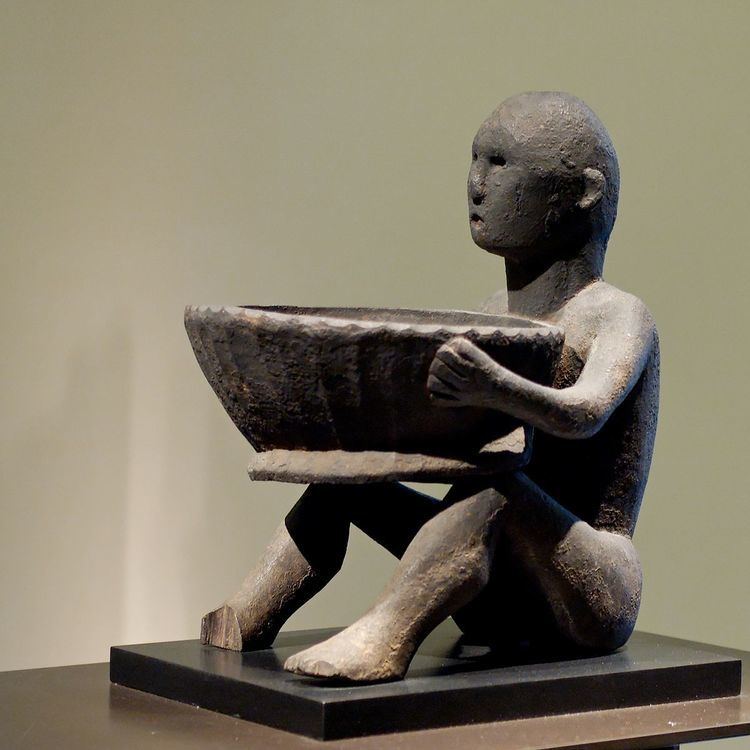 | ||
A Bulul is a carved wooden figure used to guard the rice crop by the Igorot peoples of northern Luzon. The sculptures are highly stylized representations of ancestors, and are thought to gain power from the presence of the ancestral spirit. The Ifugao are particularly noted for their skill in carving bululs.
Contents
Use
Bul-uls are used in ceremonies associated with rice production and with healing. Creation of a bul-ul involves alwen bul-ul ritual by a priest to ensure that the statue gains power. The bul-ul is treated with care and respect to avoid the risk of the spirits of the ancestors bringing sickness. The figures are placed in rice granaries to bring a plentiful harvest. Bul-ul is important to ifugaos because they believe that they can have an abundant harvest when this is placed near rice granaries.
Form
Male and female Bulul statues are often found together, with sex-related symbols such as the mortar for the female and pestle for the male. Male bulul may sometimes be depicted with loincloth, and females with tapis (wrap skirts), earrings and anklets. Although the form varies, the bulul is commonly represented as seated on the ground, with arms crossed over his upraised knees. The bulul has a simplified form, and is traditionally carved from narra or ipil wood or sometimes stone. The bulul is touched by hands dipped in blood of a chicken or pig in ritual called tunod during the rice planting season. Over time the blood imparts a dark color to the figures, overlaid with a patina of grease from food offerings. Bululs are handed down to the first child of a family. Typically the older statues have beetle holes made by insects in the granary.
Bululs are nowadays mostly manufactured for the tourist trade, but a local family may buy such a bulul and use it for ceremonial purposes, thus in a sense adding authenticity. Some of the carvers, such as Rey Paz Contreras, have become well-known artists, with their work exhibited and sold widely in the western world. Contreras uses discarded wood from the railways for his carvings of Bululs and other Anito (guardian deity) figures.
